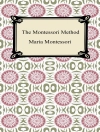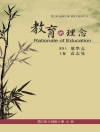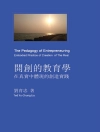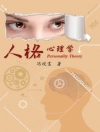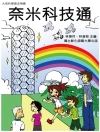Your fast-track to student engagement
Everywhere Smokey Daniels goes—every school he visits, every workshop he leads, every keynote he gives—there’s one teaching strategy that teachers embrace above all others. That single method for transforming students from passive spectators into active learners . . . for evoking curiosity, inspiring critical thinking, and building powerful writers along the way.
Now, with Elaine Daniels as Smokey’s coauthor, that best-kept teaching secret is revealed to teachers at large: Written Conversations.
Just what make Written Conversations so potent? An ongoing, thoughtful correspondence between students, and between students and their teachers, Written Conversations, above all else, catch and ride the wave of social interaction, which in turn makes school matter to kids. It’s that simple. Structure by structure, from beginning to end, Smokey and Elaine describe four variations of these ‘silent writing-to-learn discussions, ‘ during which all students in a classroom think and ‘talk’ at once in writing, instead of one at a time out loud.
How Written Conversations Work
. . . all the while, you are supported by detailed descriptions of each structure, lessons, and annotated student samples—making this the most practical teaching book in recent memory.
What kid wouldn’t want to refine written argument skills, clarify a point, or defend another’s viewpoint, when the ‘audience’ is people who matter? And Yes, Written Conversations align with the Common Core Standards for writing, reading, language, and speaking and listening, taking students well beyond the standards themselves.
Tabela de Conteúdo
Acknowledgments
Chapter 1. Letters Leverage Learning
A New Old Idea
Those Letters Are Cute, But . . .
Kid-to-Kid Letters About the Curriculum
Meeting the Common Core State Standards With Letters
Engagement, Best Practice, and Written Conversations
How the Book Is Organized
Let the Student Samples Teach You
Chapter 2. A Community of Correspondents
We′ve Got Mail
Back-to-School Letters
Parent and Kid Letters
Message Boards
Classroom Stationery
Shields
Topic Journals
Classroom and School Mail Systems
Teacher-Student Friendly Letters
Student-Student Friendly Letters
Kid-to-Kid Friendly Letters
Multi-Age Friendly Letters
INTERCHAPTER: Prompts and Stems for Written Conversations
Chapter 3. Mini Memos
Definition
Variations
Origins
Quick Look: Exit Notes
Launching Lesson: Admit Notes
Morning Message
General Instructions for Mini Memos
Start-Up Notes
Admit Notes
Writing Breaks
Exit Notes
INTERCHAPTER: Is There Time for This?
Chapter 4. Dialogue Journals
Definition
Variations
Origins
Quick Look
Launching Lesson
General Instructions for ‘Live’ Dialogue Journals
Adjustments for ‘Takeaway’ Dialogue Journals
Teacher-Student Dialogues
Student-Student Dialogues
Dialogue Journals Across the Curriculum
Feedback Loops
Teacher Response to Student Writing
Multi-Age Dialogue Journals
Management Tips for Dialogue Journals
INTERCHAPTER: The Assessment of Written Conversations
Chapter 5. Write-Arounds
Definition
Variations
Origins
Quick Look
Launching Lesson
Drawn Conversations
General Instructions for a Write-Around
Silent Literature Circles
Content-Area Write-Arounds
Text on Text
Management Tips for Write-Arounds
Chapter 6. Digital Discussions
Definition
Variations
Origins
Quick Look: Texted Discussions
Launching Lesson: Photo Journals
General Instructions for Digital Discussions
Lab Letters
Blogs
Online Partnerships
Email and Farewell
Management Tips for Digital Discussions
Works Cited
Index
Sobre o autor
Elaine Daniels has been a reading and writing teacher and teacher literacy educator throughout her career. A former high school English teacher, she graduated to teaching in college and graduate programs, first at National-Louis University in the Master of Arts in Teaching program, then at the University of New Mexico in Albuquerque, where she taught literacy education courses. Elaine now teaches in the Developmental Reading and Writing Programs at Santa Fe Community College, where her students teach her new ideas, old ways of being, and places on the map she’s never heard of.


